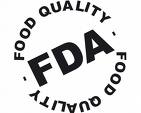
www.singularityhub.com
I previously discussed the recent efforts to expand and revise the interpretations of the Toxic Substances Control Act (TSCA) and the Food, Drug and Cosmetic Act (FDCA) to reach nanotechnology. Simultaneously, efforts have been ongoing to expand and revise the interpretation of the Federal Insecticide, Fungicide, and Rodenticide Act (FIFRA) – the federal pesticide statute – to similarly encompass nanotechnology. In particular, the proposed interpretation would require any nanoscale material used in a pesticide to be considered a new substance, and subject to adverse effects determinations in place for new substances, even if a non-nanoscale form of the same material has already been in a product registered under the act.
This proposed FIFRA interpretation is clearly part of the trend to bring nanotechnology under existing regulations and confirm the authority of existing agencies to make determinations about the safety of nanomaterials. But is this a good idea?
One bone of contention in the proposed FIFRA interpretation is the proposed application of Section 6(a)(2) to require pesticide manufacturers to report the deliberate inclusion of intentionally produced nanomaterials in their products. Section 6(a)(2) is often referred to as the “adverse effects” section of FIFRA. The implication, therefore, would be that nanomaterials would be presumed to have adverse effects. EPA says otherwise, however, stating that the proposed interpretation would emphasize data collection, while also including adverse effects. EPA also says that the proposed interpretation would reach substances other than nanomaterials.
The nanotechnology-related industries have reacted with sharp criticism of the proposed interpretation, though they continue to recognize that regulation is inevitable. Several industry groups, most notably the American Chemistry Council, have expressed concern that the proposed interpretation would “stigmatize” all uses of nanotechnology in pesticides, especially because it would use the “adverse effects” section of FIFRA as the primary means of regulation. They say other sections of FIFRA would be more neutral and less stigmatizing. This may be the case and deserves further consideration. On the other hand, if those other sections do not permit EPA to conduct the kind of safety analyses permitted under Section 6(a)(2), there would be no advantage to the public in applying the other sections instead.
Furthermore, industry groups have rallied around the general debate over the health and safety of nanomaterials. FIFRA officials have cited existing studies tending to show risks to human health and the environment from nanomaterials. An industry group, the Silver Nanotechnology Working Group, has claimed that concerns for health and the environment are overstated, insisting that long-term data show nanomaterials to be safe. This debate seems to be premature. It makes little sense at such an early juncture – when some data exists, but more is clearly warranted – to argue that minimal regulation is the best way to go.
Another major concern of industry has been the costs of preparing and producing the data that would be required under the proposed interpretation.
(The reactions of government officials and industry mentioned above were reported in: Pat Rizzuto, EPA Developing New Interpretation, Policy on Pesticide Law for Nanoscale Ingredients, 121 Daily Env’t Rpt. (BNA) B-1 (June 25, 2010).)
As I’ve said before, there are positives and negatives to the trend of broadening the interpretation of existing federal statutes to include nanotechnology. Some may be:
Positives:
● No need to wait for Congress to act
● Officials are already familiar with the statutes, so start-up would be minimal
● Health and environmental concerns would start to be addressed without substantial delay
● Nanotechnology’s discrete uses may best be regulated within statutes and by agencies that are more specialized, each dealing with different uses
Negatives:
● Is piecemeal regulation the best way to go, or is wholesale regulation a better approach?
● Industry’s concerns may be ignored as the existing agencies go forward with the new interpretations
● Potential conflicting decisions and interpretations among the various federal statutes
● It is not at all clear that existing regulation, even if reinterpreted, reaches all of the unique issues presented by nanotechnology
***These concerns, and others, should be weighed in determining the best way to regulate nanotechnology.***

 It’s fair to say that the United States has not yet tiptoed into the waters of regulating nanotechnology directly. Rather, new efforts at regulation of chemicals and consumer products tend toward indirect regulation. That is, these efforts would strengthen and expand existing federal regulation. Two examples are recent bills introduced in the House of Representatives that would amend the Toxic Substances Control Act (TSCA) and the Food Drug and Cosmetic Act (FDCA) for substances and products that may or may not contain nanomaterials. As discussed in
It’s fair to say that the United States has not yet tiptoed into the waters of regulating nanotechnology directly. Rather, new efforts at regulation of chemicals and consumer products tend toward indirect regulation. That is, these efforts would strengthen and expand existing federal regulation. Two examples are recent bills introduced in the House of Representatives that would amend the Toxic Substances Control Act (TSCA) and the Food Drug and Cosmetic Act (FDCA) for substances and products that may or may not contain nanomaterials. As discussed in 

